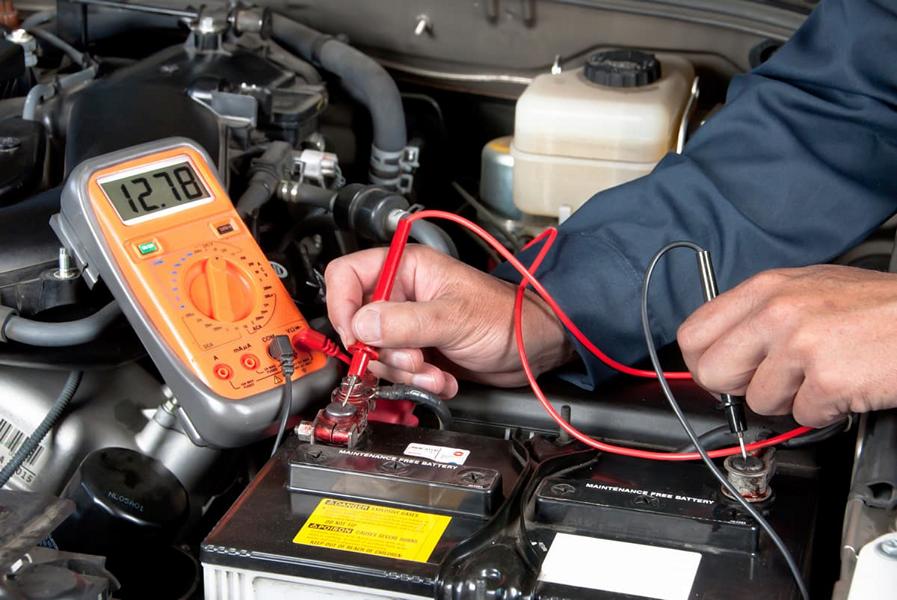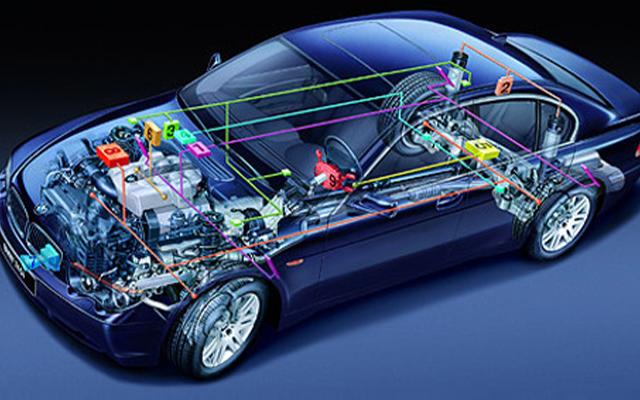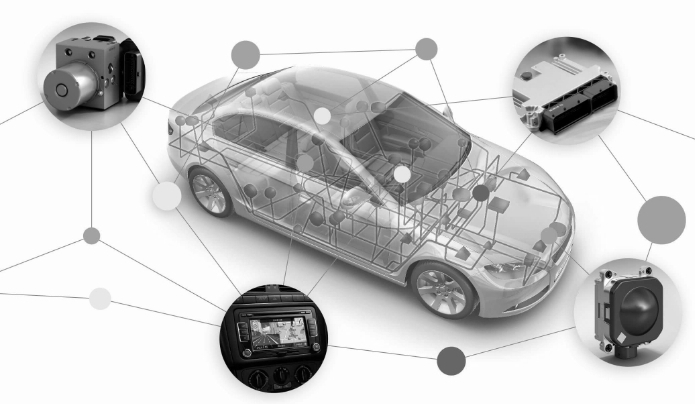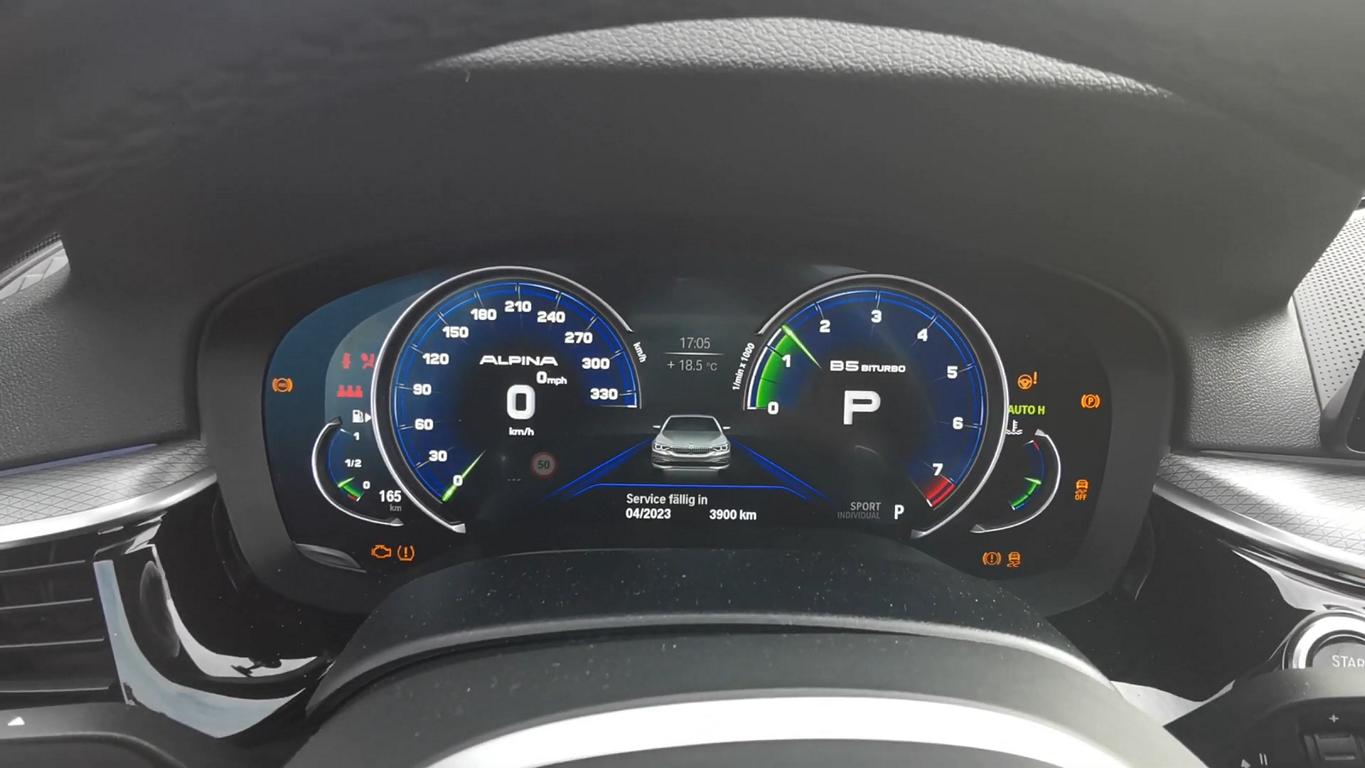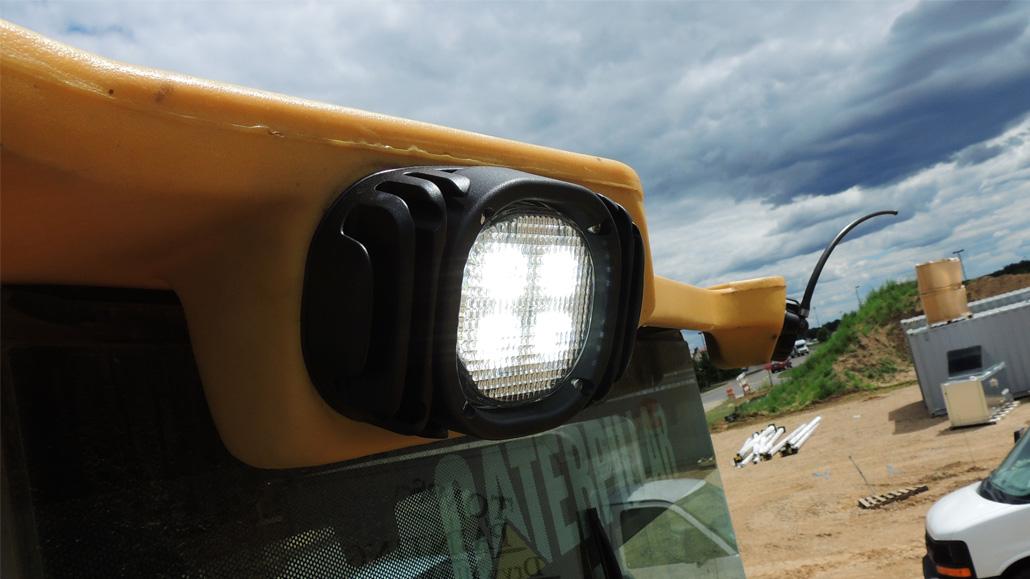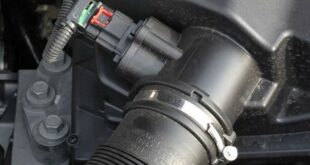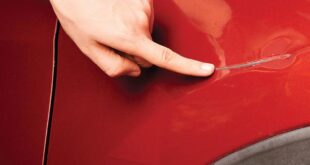Electronic problems in the car can make you sweat a lot. But don't worry, with a little know-how and the right tools, you'll soon be a master of electrical engineering and be able to fix electronic problems yourself. In this article we will guide you through the world of Fahrzeugelektrik, show you how to identify and fix problems. So, grab yours Multimeter and let's get started! But please notethat our tips for “simple vehicles“ like a VW Golf MK4 or MK5, and not for a new BMW 7 Series or an S-Class. Understand the basics: Before we dive into the depths of troubleshooting, it's important to understand the basics. The electrical system of a vehicle consists of various components such as: Battery, the Starter, alternator and a network of cables and fuses. Each of these parts plays a crucial role in your car's electrical ecosystem.
Fix electronic problems!
- Step 1: Recognize symptoms: Electronics problems often present themselves in the form of symptoms such as flickering lights, problems starting the engine, or unexplained battery discharges (Car battery check instructions). Sometimes there are more subtle signs, such as an unusual noise from the engine compartment or a warning light on the dashboard that only activated briefly.
- Step 2: Check the battery: Start with the Battery. It is the heart of vehicle electrics. First check the battery voltage with a multimeter. A healthy battery should be about 12,6 volt show. If there are fewer, the battery could be weak or defective. Also check the battery terminals for corrosion and make sure they are secure. If it is defective, replace it (Instructions for replacing the battery)
- Step 3: Test starter and alternator: If the battery is OK but the car won't start, the... Starter be the problem. A clicking noise when trying to start often indicates this (More information is available here). That alternator is responsible for the power supply during operation and charging the battery. A faulty alternator can lead to a weak battery. Check the alternator by measuring the battery voltage while the engine is running. She should be between 13,5 and 14,5 volts lay. If it doesn't achieve this, it needs to be changed (Instructions for changing the alternator).
Fix Electronics Problems: Relays & Error Codes!
- Step 4: Check fuses and relays: An often overlooked area is the Fuses and Relais. A blown fuse or defective relay can cause certain electrical components to fail. Check the fuse box and replace any defective fuses (Instructions for the assignment in the fuse box). Relays can be tested for functionality using a multimeter.
- Step 5: Check cables and connections: Another important step is checking the Cables and Connections. Damaged or loose cables can lead to short circuits and other electrical problems. Check all visible cables for damage and ensure that all connections are tight.
- Step 6: Read error codes: Modern vehicles have an on-board diagnostic system (OBD) that stores error codes when problems occur. A OBD scanner can read these codes and help you identify the problem. Sometimes simply clearing the error code can fix the problem (Instructions for reading error codes)
- Step 7: Get Professional Help: If you can't pinpoint the problem despite your best efforts, don't hesitate to seek professional help. A qualified mechanic has the experience and tools to diagnose and repair even more complex electrical problems.
Conclusion
Diagnosing and fixing vehicle electrical problems can be challenging, but with patience, the right tools, and a systematic approach, you can solve many problems yourself. If you are unsure or have complex problems, remember to always consult a specialist and do not tinker with the brakes or airbags without specialist knowledge or special training. This will keep you safe on the road and your vehicle in top shape!
FAQ: Tips & tricks on vehicle electrics
- How can I extend the life of my car battery? Regular maintenance: Check the battery for corrosion and clean the terminals. Use one Battery maintenance device if the vehicle is not used for a long period of time.
- What to do if there are unexplained electrical failures? Check wiring harness: Look for loose connections, chafing or breaks in the wiring harness. Often they are hidden ones Cable breaksthat cause problems.
- How do I find out if my alternator is bad? Voltage test: Measure the voltage of the battery with the engine running. It should be between 13,5 and 14,5 volts. Fluctuations indicate one faulty alternator out.
- What do I do if my fuses blow frequently? root cause analysis: Frequent blowing of fuses indicates one Short circuit there. Check the affected circuits for damage.
- Can I diagnose electronics problems myself? OBD-II scanner: For many problems, an OBD-II scanner is a useful tool. He reads Error codes which can provide clues to the cause.
- What should I pay attention to when getting started? Right order: Make sure to connect the cables in the correct order to avoid electrical damage. First plus, then minus. (Provide instructions for getting started)
- How do I protect my car from water damage? Check water drains: Make sure water drains in the engine compartment and around the windshield are clear Water damage to prevent. (Instructions on what to do after water damage)
- Are regular software updates important? Check updates: For modern vehicles, software updates can help prevent or fix electronic problems.
- How do I check my vehicle's grounding? Check ground wire: Make sure the ground wires are tight and rust-free. Poor grounding can lead to a variety of electrical problems.
- What to do if the electronics malfunction after installing an accessory? Professional installation: Make sure all accessories are installed properly and no Malfunctions in the electrical system cause.
More bullet points on the topic of electronic problems!
- Battery care: Regularly Clean battery poles and check for corrosion. Use pole grease to prevent corrosion.
- Check grounding: Make sure that the ground wire are solid and rust-free. Poor grounding can cause electrical faults.
- Use multimeter: Learn how to use a multimeter for Voltage and resistance measurement used. Indispensable for troubleshooting.
- fuse box: Regularly fuse box Check for loose or damaged fuses. Have spare fuses ready in the vehicle.
- Alternator check: Check those alternator regularly for signs of wear, such as loud noises or a fluctuating voltage display.
- Inspect wiring harness: Regular inspection of the Wiring harness for chafing or breaks, especially after repairs in the engine compartment.
- Read error codes: Use one OBD-II scannerto read and delete error codes. Helpful for quick diagnosis.
- Test relay: Check regularly Relais for correct function. A defective relay can lead to unexpected electrical problems.
- Be careful with jumpstarts: When giving or receiving jump start help, always do so right order Pay attention to the cables to avoid damage to the electrical system.
- Software updates: Check regularly for modern vehicles Software updates for the vehicle system to avoid electronic problems.
- Avoid water damage: Make sure that Water drains in the engine compartment and around the windshield are clear to prevent water damage to electrical components.
- special tools: Invest in special tools for electrical systems, such as cable testers or circuit finders, to more easily identify specific problems.
- Regular maintenance: Stick to that maintenance intervals of the manufacturer in order to detect and correct electrical problems at an early stage.
The following note is essential: For safety reasons, tuningblog recommends all repair, inspection and maintenance work exclusively to be carried out in a specialist workshop! Although our information is summarized to the best of our knowledge and belief, we cannot assume any liability for the content. All information is therefore "without guarantee".
That wasn't it yet!
In our Auto Repair Category You will find guides and instructions on common vehicle defects, repairs and the installation of accessories/tuning parts.
 tuningblog.eu Your magazine about tuning the car
tuningblog.eu Your magazine about tuning the car
